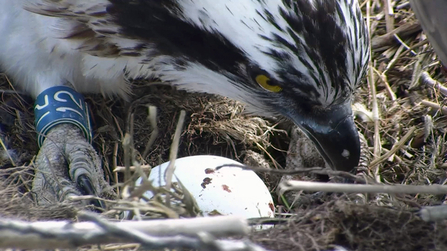Beside the shores of Loch Ness in Scotland a hundred years ago, existed a huge monster. A monster so terrifying, it could wipe a whole species out in a blink of an eye. One minute you’re there doing your own thing, the same thing you’ve been doing for millions of years, then - BANG. You’re gone.
The problem was, this monster wasn’t one huge animal lurking in the depths of a loch, only visible to a few tourists after numerous decanter helpings of Scotland’s finest tipple, it was real. Worse still, there were more than one of them, there were hundreds of them, if not more.
Today we call these monsters illegal egg collectors, and by 1916 at Loch Loyne, just a few miles to the west of Loch Ness, they had succeeded in wiping out the osprey in the UK as a breeding species. Every single one. Gone. Extinct.
Here’s a photo of Glesni, fast asleep taken a few hours ago. At 03:12 to be exact.





